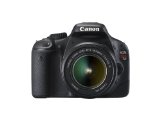So you’re ready to take the plunge and buy your first digital SLR. The camera world is full of excellent products, but just because one is highly touted doesn’t necessarily mean it is the right model for you. What is the ideal camera for one person may be a bad fit for someone else. Since this is a fairly expensive purchase, you want to take some time and physically check out a number of models before making your decision. Don’t set out with a preconceived notion that you must get a certain Canon, or Sony, or Nikon, or Pentax. Have an open mind.
What Does it Feel Like When You Are Holding It?
After you have checked out a few reviews, don’t just go to a website and order the latest and greatest. Narrow your choices to a few top picks then get yourself into the nearest camera store so you can check them out in person. Hold each camera in your hands. Is it heavy and awkward or does it feel about right for your size and weight? If you have big hands, can you handle the buttons without fumbling? Does it have a comfortable grip? If not, put it down and try another model. If a camera is not comfortable to hold and handle, you aren’t going to want to use it, not matter how highly it is touted as the best on the market.
Does the Menu Make Sense to You?
Some cameras have incredibly complex menus and are a navigational mystery while others tends to be fairly intuitive and easy to figure out. Check out the menus of your top prospects. The most common settings you will be working with are the Shutter Speed, Aperture, ISO, White Balance, Exposure Bias, Focus Mode and Metering. Can you find and change these settings fairly easily? Again, a model may be all the rage with great performance, but if you have a hard time working your way through the menu you are only going to get frustrated and revert to your point-and-shoot because it’s easier.
What Features Do You Really Need?
One of the trickiest aspects is discerning between the necessary features and the gimmicky ones that can entice us to over spend for our needs. What the heck is 4D Matrix Metering anyway? Do you really need that flip-out LCD? Some bells and whistles are fun and make the camera easier to use, but some only entice you to buy above your needs. Make a list of the key features you consider essential and this will help you keep things in perspective when you are being tempted with all those cool but non-essential features.
Consider How You Will Use Your Camera and Your Skill Level
Buying a D-SLR at the high end of the price spectrum may or may not make sense for you. Unless you really know what you are doing, you will probably be looking at a camera with special automatic shooting modes like Portrait, Night Shot, etc. These features are commonly found these days because most people like that convenience. This is all well and good and very handy, but knowing how to manual adjust the ISO, Aperture and Shutter Speed are the mainstays of photography, especially with D-SLRs, and manual mode is where all the creativity comes in. If you don’t know how to use these settings, taking a class from your community college is a low-cost way to learn; it’s how I first learned.
You can find great cameras in a variety of price points. So before you jump on that $2000+ DSLR, consider how you plan to use it. Are you planning on taking photos while traveling? Shooting your kids’ soccer matches? Are you becoming a serious amateur photographer who wants to make a little money on the side? Knowing how you plan to use your camera can help you determine whether you would be happier with a mid-range SLR versus a super high end camera, and your bank account may thank you.

